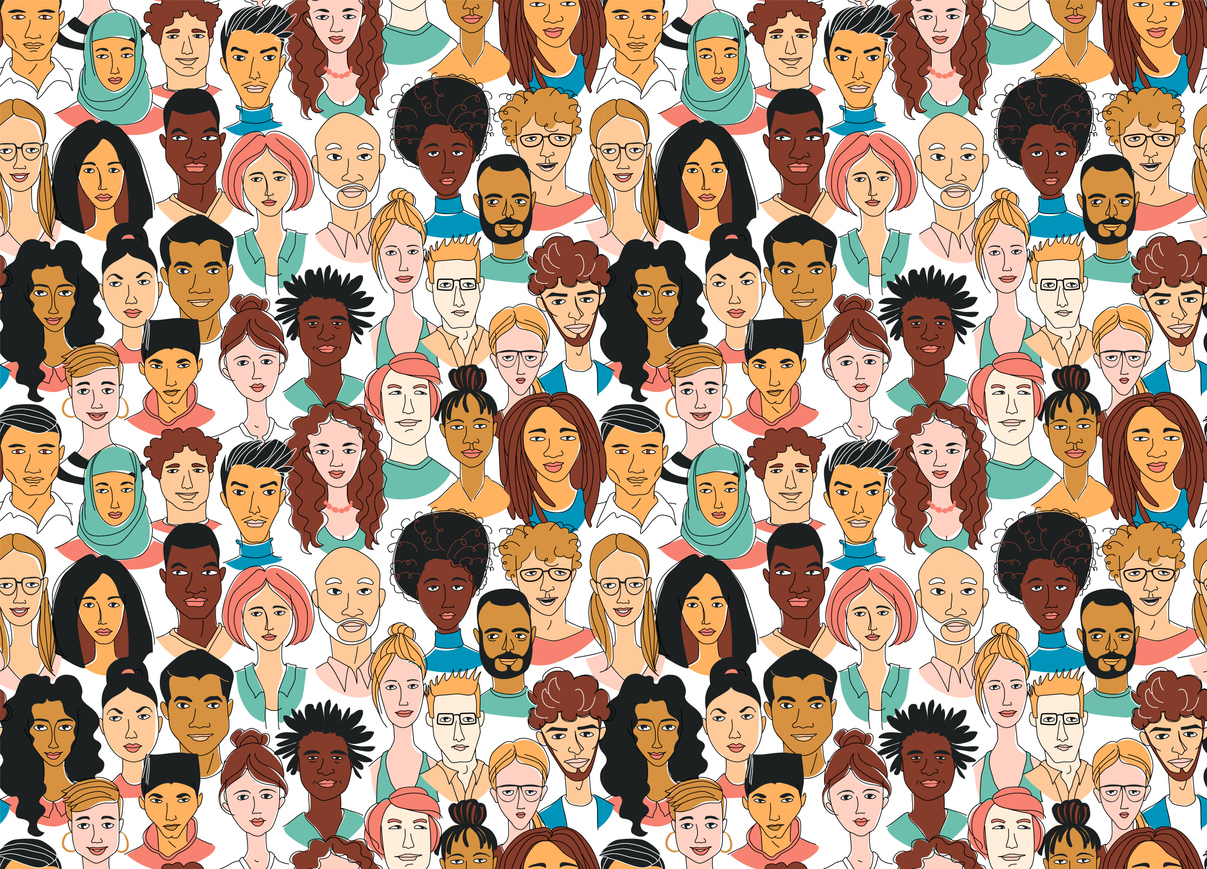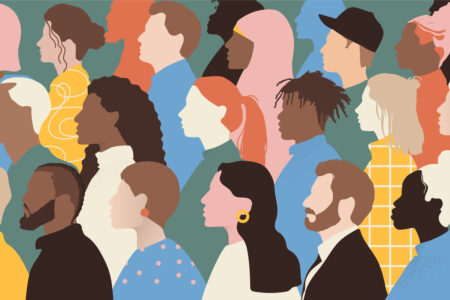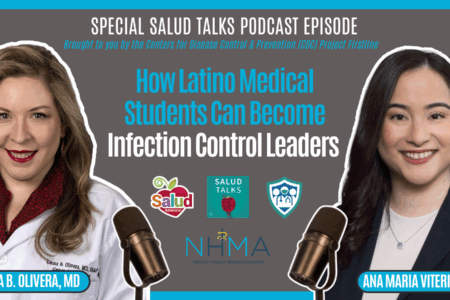
Share On Social!
This is part of the Salud America! Achieving a Cohesive Culture for Health Equity in Latino and All Communities: A Research Review»
Abstract
Health inequities are persistent in the United States.
A widening socioeconomic gap, extensive poverty, and multi-level racism, discrimination, and segregation contribute to inequitable distribution of healthcare, resources, and a significant disparity in mental and physical health outcomes among Latino and other population groups.
In a society characterized by income segregation and information “bubbles,” it is easy for those who are more fortunate and/or whose hard work has been amply rewarded to fail to perceive the degree of suffering that is experienced by those who do not share their affluence. There is growing evidence that the consequences of poverty and racial/ethnic disparities in access to health care have very profound effects, especially on children, who are blamelessly born into impoverished or negatively discriminated populations.
A cohesive culture with health equity is one in which everyone works both individually and as a group to ensure that each individual has a fair and just opportunity for health and wealth, as well as equitable access to basic services and resources required for these goals. To achieve a more cohesive culture, it will be necessary to overcome implicit bias, system justification, moral disengagement, and negative attitudes toward those living in poverty, including Latino and other minority groups. More effective communication about the lifelong and inter-generational impacts of poverty may increase compassion between outgroups and push back against moral disengagement. We must promote social cohesion and avoid bias toward the socioeconomic status quo and preference for sociocultural homogeneity.
Intergroup contact, peer modeling, awareness-provoking interventions, and use of targeted social media programs are emerging methods that may improve tolerance and compassion toward minority and impoverished out-groups to counteract the stereotypes that contribute to system justification. It is our hope that these interventions may stimulate rational and unemotional dialogue to spur a movement toward social justice and to reduce health disparities and inequities. Improving social cohesion and increasing access to resources may also buffer the negative effects of poor living conditions and thus increase overall well-being in all communities across the United States.
This research review summarizes current literature on the social and health impact of poverty, the impact of racism and bias on minorities and those living in poverty, and emerging interventions, policies, and practices that can be implemented to alleviate poverty, improve social cohesion, reduce bias, and increase compassion toward all groups to contribute to a cohesive culture with health equity.
Introduction
There is an undeniable link between education, socioeconomic status, and quality of life. Those with more education live longer and are healthier than those with less education, and their children have a better quality of life and more opportunities than those with less education. Unemployment and underemployment negatively affect health and overall quality of life, and employment opportunities are influenced by both the economic condition of a community and the individual’s level of academic attainment.
Socioeconomic status (SES) is a measure of an individual’s (or family’s) economic or social position compared to others and is a composite based on several factors including income, financial security, educational attainment, subjective perceptions about social class and status, and the commensurate quality of life and privilege afforded by that status. SES is a reliable predictor of lifelong physical and mental health outcomes. Low SES correlates to poverty, low educational attainment, and poor health.1
The socioeconomic gap, the differences between lower and higher SES groups, is widening in the United States, leading to inequitable distribution of healthcare and resources and a significant disparity in quality of life. Low SES in childhood is correlated with low income and poor health in adulthood due to poor cognitive development and poor language and memory processing due to chronic deprivation. Almost half of the 72 million children in the United States are growing up in low-income families.1–3
 Communities are often segregated by SES, race, and ethnicity, and race and ethnicity often determine a person’s SES. Low SES communities often have low economic development, poor health conditions, and low educational attainment, and the schools in these areas tend to be under-resourced. Low SES is perpetuated by inadequate education and higher school dropout rates in lower SES areas.2–4 Nearly one quarter, 24.8%, of people living in poverty do not have a high school diploma or equivalent, and 13.3% have a high school diploma but no college education.5 This is significantly lower than the national average: in 2015, 88% of U.S. adults had a high school diploma or equivalent, and 33% had at least a bachelor’s degree. Low SES Americans are also less likely than high SES Americans to have health insurance, more likely to avoid seeking medical care due to high costs, more likely to be treated in hospital emergency departments, and have twice as many avoidable hospitalizations. The United States has the greatest disparities in health care access of any wealthy country in the world.6
Communities are often segregated by SES, race, and ethnicity, and race and ethnicity often determine a person’s SES. Low SES communities often have low economic development, poor health conditions, and low educational attainment, and the schools in these areas tend to be under-resourced. Low SES is perpetuated by inadequate education and higher school dropout rates in lower SES areas.2–4 Nearly one quarter, 24.8%, of people living in poverty do not have a high school diploma or equivalent, and 13.3% have a high school diploma but no college education.5 This is significantly lower than the national average: in 2015, 88% of U.S. adults had a high school diploma or equivalent, and 33% had at least a bachelor’s degree. Low SES Americans are also less likely than high SES Americans to have health insurance, more likely to avoid seeking medical care due to high costs, more likely to be treated in hospital emergency departments, and have twice as many avoidable hospitalizations. The United States has the greatest disparities in health care access of any wealthy country in the world.6
Structural racism plays a significant role in healthcare inequality, and inequality in general, by reinforcing and perpetuating dynamics that are advantageous to whites while creating a myriad of adverse outcomes for minority groups and people of color. Public policies and institutional practices contribute to a system that reinforces racism and is responsible for inequities in insurance rates, payment structures, treatment, and health outcomes.6
In 2018, there were 38.1 million people living in poverty in the United States, representing 11.8% of the population; while children represented 22.6% of the total population in 2018, they constituted 31.1% of people living in poverty.5 Moreover, 33% of Latino children and adolescents are living in poverty, compared to 14% of white children. Minority groups are more likely than whites to experience multidimensional poverty, suffering from poor health, poor living standards, and disempowerment, and African American and Latino children are more likely to attend high-poverty schools. Latino students have the highest rates of high school dropout in the country.4
According to data from the 2019 Current Population Survey Annual Social and Economic Supplement, the median Latino income was $51,450, compared to $70,642 for whites; 17.6% of Latinos in the United States live in poverty.5 The lowest median income reported was in rural areas at $45,830, where, according to the 2010 census, almost 60 million people (19.3%) in the United States reside.7 In addition to having a lower median household income, people living in rural areas are less likely to have a bachelor’s degree or higher.7
Complicating, and contributing to, the high levels of poverty among minority populations in the United States, including the Latino population, is the issue of discrimination, both economic and racial. Almost 60% of Latinos and African Americans believe that race relations in the United States are generally bad, and 58% of Latinos have been treated unfairly based on race or ethnicity or have been discriminated against.8 Latinos with darker skin colors (64%) report they have experienced discrimination or been treated unfairly regularly or from time to time, compared with Latinos with a lighter skin tone (50%).8 Younger Latinos also are more likely to have an experience with discrimination, with 65% reporting an encounter.9
Only through understanding and alleviating conditions of poverty ─ and recognizing and reducing racism and biases while increasing compassion through intergroup contact and peer modeling ─ can public health policies, community leaders, and policymakers begin to address health inequities and start to build a cohesive culture of health for Latinos and all people. Communication has the potential to influence cognitions, attitudes, and emotions to increase people’s support for changes that can reduce health disparities and inequities.
Methodology
This research review summarizes available peer-reviewed scientific literature regarding discrimination and bias toward children and adults living in poverty as well as toward Latino and immigrant communities; common misconceptions regarding immigrant populations and people living in poverty and how these misconceptions and biases are destructive; efforts developed to correct misconceptions and alleviate conditions of poverty; and the efficacy of those efforts.
Keyword searches were conducted in PubMed and Google Scholar. Databases were searched with key terms such as: “poverty AND Latino children,” “poverty AND Hispanic children,” “poverty AND immigrants,” “poverty AND immigrants AND Latino,” “poverty AND immigrants AND Hispanic,” “poverty AND rural,” “poverty AND Latino AND child health,” “poverty AND mental health,” “rural AND mental health,” “poverty AND bias,” “poverty AND bias AND Latino,” “poverty AND bias AND Hispanic,” “poverty AND discrimination,” “poverty AND discrimination AND Latino,” “poverty AND discrimination AND Hispanic,” “implicit AND bias,” “implicit AND bias AND Latino,” “implicit AND bias AND Hispanic,” “social cohesion AND Latino,” “social cohesion AND poverty,” “system AND justification AND discrimination,” “system AND justification AND bias,” “discrimination AND education AND Latino,” “discrimination AND education AND Hispanic,” “bias AND healthcare AND poverty,” “bias AND healthcare AND Latino,” and “bias AND healthcare AND Hispanic.”
Article titles and abstracts were examined; relevant articles were retrieved and reviewed, regardless of the study’s conclusions regarding discrimination and bias toward immigrants and those living in poverty. Additional articles were identified through searches of the references of the initial set of articles found through keyword searches. Search limits were confined to the English language.
Quick links from our Research Review »
See the Guide: System Justification!
See the Guide: Moral Disengagement!
More from our Research Review »
- Introduction/Methods
- Research: Poverty among Latinos
- Research: Rural Poverty
- Research: Poverty and Healthcare
- Research: Discrimination and Education
- Research: Discrimination and Outcomes
- Mechanism: Implicit Bias
- Mechanism: System Justification
- Mechanism: Moral Disengagement
- Strategy: Intergroup Contact Theory
- Strategy: Peer Modeling
- Strategy: Implicit Bias Training
- Strategy: Effective Communication
- Strategy: Social Media for Social Change
- Strategy: Building Social Cohesion
- Policy Implications
- Future Research
References for this section »
- American Psychological Association (APA). Ethnic and Racial Minority Socioeconomic Status.; 2017. https://www.apa.org/pi/ses/resources/publications/factsheet-erm.pdf. Accessed June 15, 2020.
- American Psychological Association (APA). Psychologists, School-Based Health Centers, and Medicaid. https://www.apa.org/advocacy/education/medicaid-schools-facts.pdf. Accessed June 18, 2020.
- Katz VS, Gonzalez C, Clark K. Digital Inequality and Developmental Trajectories of Low-Income, Immigrant, and Minority Children. Vol 140.; 2017. www.aappublications.org/news. Accessed June 11, 2020.
- American Psychological Association (APA). Education & Socioeconomic Status.; 2017. www.apa.org/pi/ses. Accessed June 15, 2020.
- Semega J, Kollar M, Creamer J, Mohanty A. Income and Poverty in the United States: 2018 Current Population Reports.
- Griffith K, Evans L, Bor J. The affordable care act reduced socioeconomic disparities in health care access. Health Aff. 2017;36(8):1503-1510. doi:10.1377/hlthaff.2017.0083.
- United States Census Bureau. Measuring America: Our Changing Landscape.; 2016. www.census.gov/population/censusdata/urpop0090.txt; Accessed June 11, 2020.
- Pew Research Center, Gonzalez-Barrera A. Hispanics with darker skin more likely to face discrimination. Fact Tank: New in the Numbers. https://www.pewresearch.org/fact-tank/2019/07/02/hispanics-with-darker-skin-are-more-likely-to-experience-discrimination-than-those-with-lighter-skin/. Published 2019. Accessed July 8, 2020.
- Krogstad JM, Lopez G. Roughly Half of Hispanics Have Experienced Discrimination.; 2016. https://www.pewresearch.org/fact-tank/2016/06/29/roughly-half-of-hispanics-have-experienced-discrimination/. Accessed June 11, 2020.
By The Numbers
3
Big Excuses
people use to justify discriminatory behavior



